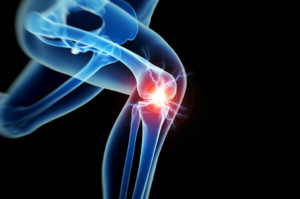Difference between total and partial joint replacement
 An orthopedic surgeon performs joint repair and replacement. When joint surfaces are so damaged they do not respond to nonsurgical treatments, cause severe pain for the patient, or limit daily activities a doctor may advise surgery. The desired result of surgery is to restore mobility and relieve pain. A normal joint is covered by a smooth articular surface. This covering allows for smooth movement within the joint. Damaged cartilage has gradually worn out causing the ends of the bones to rub against each other.
An orthopedic surgeon performs joint repair and replacement. When joint surfaces are so damaged they do not respond to nonsurgical treatments, cause severe pain for the patient, or limit daily activities a doctor may advise surgery. The desired result of surgery is to restore mobility and relieve pain. A normal joint is covered by a smooth articular surface. This covering allows for smooth movement within the joint. Damaged cartilage has gradually worn out causing the ends of the bones to rub against each other.
Weak at the Knees
Most joints have either two or three parts. The knee joint is divided into three parts: medial (inside), lateral (outside), and patella (knee cap). In a partial knee replacement, the surgeon replaces just the damaged area. This way the patient can keep more of his/her own bone, tissue, and ligaments in hopes of regaining full mobility and in less time. A partial replacement is less invasive, has a shorter recovery time, and less time is spent in the hospital. An average hospital stay is 1 to 2 days for partial replacement and 3 to 4 days for total replacement. Sadly, only a small number of patients qualify for a partial knee replacement. The majority has two or more damaged areas that make a total knee replacement the best solution.
Have a Ball
Ball and socket joints are in the hips and shoulders. These surgeries involve removing the damaged ball and/or socket and replacing it with a metal ball that’s attached to a stem placed into the thigh or arm bone. This is a partial joint replacement. But when the surgeon also adds a plastic or metal cup in place of the socket that is considered a total joint replacement.
The Replacements
A partial replacement is often best after fracture, isolated arthritis, or diseased thigh or arm bone when it does not involve the hip or shoulder socket. A total joint replacement is often best for patients with arthritis or degenerative disease involving the ball and socket of the hip or shoulder. Joint replacement surgery (Arthroplasty) is also possible for:
- ankles
- elbows
- hands
- feet
- wrists
- spine
A New Approach
In the past several years, a minimally invasive approach has become popular including robotic surgery. Surgery is performed through one or two small incisions rather than a one long incision. Advantages include:
- smaller incision
- less muscle separation
- less bone removed
- shorter hospital stay
- shorter recovery
- better movement
- feels more like a normal joint
- more active than after a total joint replacement
Whether it’s a partial or total joint replacement, the less invasive the better as far as recovery time and complications like infection are concerned.





